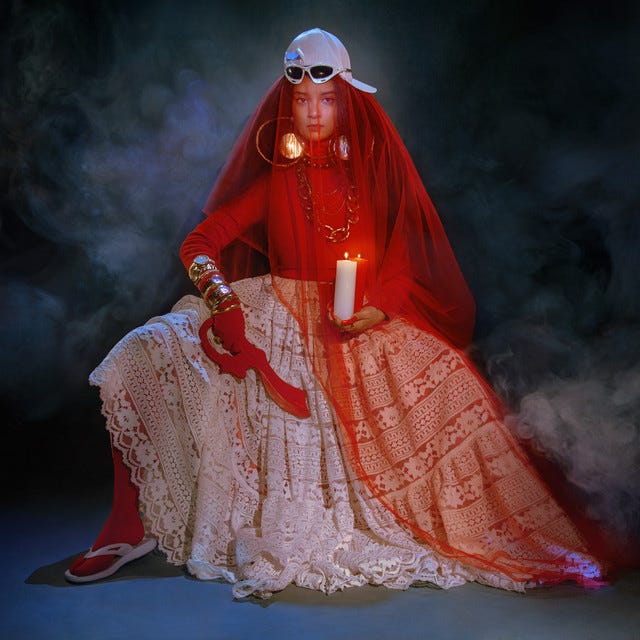EVERY GENRE PROJECT - September 21 - Rasteirinha
Genre of the Day - Rasteirinha 🇧🇷
Album of the Day - Rito de passá by MC Tha (2019)
I’ve mentioned before how the country perhaps most dedicated to standom is Brazil. It often seems that every manner of international or homegrown artist is appreciated, thousands or even hundreds of thousands of Rio or São Paulo residents pouring into venues to appreciate a performance. For example, Mariah Carey flew south for their famed Rock in Rio festival. As her first performance since the tragic passing of her mother and sister in the same weekend, one imagines that there’s no better audience to act as a pick-me-up than Brazilians. Avid appreciation for music is a two-way street; just as much as the country’s fans rapturously attend shows and festivals, its broad musical output is generous and bountiful.
We’ve been visiting the country lots recently, but we return to one of its most raucous recent fusions. Brazilian funk is its own vibrant ecosystem, prolifically spawning new subgenres each year like the crazed, sped-up funk 150 BPM we encountered earlier in the year. It’s only beginning to percolate more internationally as visionaries like Björk and TikTok DJs take a bite of its coolness as Diplo did in the 2000s and thanks to the semi-inexplicable yearly frequency of Anitta VMA performances. No knock to Anitta, it’s simply that she’s the only VMA performer to have performed for the last three consecutive years, raising eyebrows about American music shows’ laziness when it comes to supposedly showcasing foreign sounds. I digress. Funk carioca, the main funk-influence in rasteirinha, excellently epitomizes Brazilian funk as a whole. As Miami bass and electro records lit up Rio favelas’ blocks in the ‘90s, DJs added complexity and local flair to their brash intensity via Afro-Brazilian tamborzão rhythms.
Funk seamlessly integrates local and centuries-old rhythmic traditions with the sounds of the popular international sphere, alchemizing the two with the energy of the favelas. Rasteirinha, which translates to flip-flops and disappointingly has no etymological connection to the word rasta despite dancehall influence, follows a few decades later. Rasteirinha emerged in the early 2010s with reggaeton, a kindred hip-hop-meets-local-energy phenomenon, and dancehall occupying its DJs taste-making. It slows funk slightly to around 95 BPM, elevating this sense of levity with samba instrumentation. It represents Brazilian funk’s constant ability to absorb and develop. It’s a perpetual sense of syncretism highlighted by none other than today’s artist MC Tha, who superbly breaks down funk’s spiritual and social significance in explaining her vision for this project. She believes that funk can act as a conduit to generate respect for Afro-Brazilian religion and culture, and that music is a powerful force in fighting the delegitimization of art produced in the ghetto.
Clad in the dress of orixás, the deities of the syncretic Afro-Brazilian religion umbanda that she follows, MC Tha previews her savvy syncretic ideas on the cover by also wearing the sandals and sunglasses that typify quotidian favela fashion. Each minute of the album is just as striking as that photo, one of the best album covers I’ve encountered over the course of this year. The title track features fluid yet metallic strings, a stunning combination, that move with the rise and fall of her voice over industrial, complex driving percussion. “Coração Vagabundo” is uproarious, festive horns and funk guitar flashing a kaleidoscope of sonic color over drum rumbles. Dancehall influence pulses through the instrumentation and rhythm of the electrified “Clima Quente.” She softens crisp reggaeton with Eilish-esque chimes and harmonies in “Oceano.” It’s a bold artistic declaration, delivering on rasteirinha’s danceable promise while elevating its potency to ritual status in the hopes for a Brazil that honors its Afro-Brazilian history and expression.




